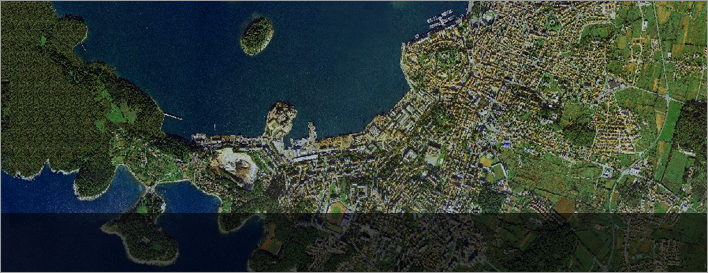Dr. Dayton Lambert


Dr. Dayton Lambert, professor of agricultural economics at Oklahoma State University, is a member of the OK NSF EPSCoR Track-1 RII Award titled Socially Sustainable Solutions for Water, Carbon, and Infrastructure Resilience in Oklahoma. The $20 million research project is a social science-led, multi-disciplinary collaboration among social, physical, biological, engineering, and computational scientists. More than thirty researchers from across the state are working together on the project, which began July 1, 2020.
Dr. Lambert's research supports the Social Dynamics Research Framework aspect of the project. Human perceptions and beliefs are at the heart of the most critical challenges facing Oklahoma. They shape behaviors and collective decisions, and therefore our responses to the changing world. Using data from the M-SISNet, the social dynamics team will (a) measure and model perceptions and beliefs underpinning the social narratives that shape debates among the public, opinion leaders, and scientists about the emerging, interconnected, and salient threats to Oklahomans identified in our research focus areas; (b) evaluate how widely shared narratives have undermined collective action to pursue convergent solutions to wicked problems that recognize and address the array of anthropogenic drivers of these threats; and (c) measure social valuation for solutions using willingness-to-pay for potential sustainable solutions.
Coupled with the project’s four interconnected focus areas, the Social Dynamics framework provides the structure and direction of the project. The distinct but interrelated focus areas and the research questions they pursue were selected for this project because they deepen understanding of overlapping natural and human dynamics that drive critical problems facing Oklahoma today. Treated individually as stand-alone problems, they are susceptible to social polarization and policy gridlock. Addressed as an integrated set, these dynamics offer the prospect for revised understandings of problem boundaries and provide the potential for informed value tradeoffs across social groups that can enable socially sustainable solutions to address our most pressing problems.
Dr. Lambert's Research Interests
- Microeconomics
- Research Methods and Methodology
- Spatial Econometrics
- Technology Innovation and Adoption
Specialty Areas: Agribusiness, Production Economics, and Regional Economics
- Ghaneeizad, S, A Papanicolaou, B Abban, C Wilson, C Giannopoulos, DM Lambert, FR Walker, S Hawkins. 2018. Development of a Distributed Hydrologic Model for a Region with Fragipan Soils to Study Impacts of Climate on Soil Moisture: A Case Study on the Obion River Watershed in West Tennessee. Geosciences. 8(364), doi:10.3390/geosciences8100364.
- Sheng, D, S Owen, DM Lambert, BC English, RJ Menard, DW Hughes, LH Lambert, CD Clark. In Press. A Multiregional Input-Output Analysis of Water Withdrawals in the Southeastern United States. Review of Regional Studies.
- O’Dell, D, NS Eash, BB Hicks, JN Oetting, TJ Sauer, DM Lambert, J Logan, WC Wright, JA Zahn. 2018. Reducing CO2 Flux by Decreasing Tillage in Ohio: Overcoming Conjecture with Data. Journal of Agricultural Science. 10(3):1-15. doi:10.5539/jas.v10n3p1.
- Claytor, H, CD Clark, KL Jensen, DM Lambert. 2018. Cattle Producer Willingness to Afforest Pastureland and Sequester Carbon. Forest Policy and Economics. 92:43 – 54. https://doi.org/10.1016/j.forpol.2018.03.004.
- He-Lambert, L, BC English, DM Lambert, O Shylo, JA Larson, TE Yu, BS Wilson. 2018. Determining a Geographic High Resolution Supply Chain Network for a Large Scale Biofuel Industry. Applied Energy, 218:266 – 281. https://doi.org/10.1016/j.apenergy.2018.02.162.
- Determining a Geographic High Resolution Supply Chain Network for a Large Scale Biofuel Industry. Applied Energy. 218:266 – 281. https://doi.org/10.1016/j.apenergy.2018.02.162.
- Sullivan, C, NS Eash, JA Zhan, JG Goddard, DM Lambert. 2017. Utilization of Spent Microbial Biomass as an Alternative Crop Nitrogen Source. Agronomy Journal. 109:1870–1879, doi:10.2134/agronj2016.12.0742.
- Lambert, DM, JA Larson, RK Roberts, BC English, X Zhou, LL Falconer, RJ Hogan, JL Johnson, JM Reeves. 2017. “Resistance is Futile”: Estimating the Costs of Managing Herbicide Resistance as a First-1 order Markov Process and the Case of US Upland Cotton Producers. Agricultural Economics. 48:1–10, http://onlinelibrary.wiley.com/doi/10.1111/agec.12341/epdf.
- Lambert, DM, C Cavasos, B Wilson, CD Clark, BC English. Projected Changes in Stream System Nitrogen Runoff Associated with a Mature Cellulosic Ethanol Industry in the Southeastern United States. 2016. Land Use Policy. 56:291–302, http://dx.doi.org/10.1016/j.landusepol.2016.04.019.
- He, L, BC English, RJ Menard, DM Lambert. 2016. Regional Woody Biomass Supply and Economic Impacts from Harvesting in the Southern US. Energy Economics. 60:151–161, dx.doi.org/10.1016/j.eneco.2016.09.007.
- Li, X, KL Jensen, CD Clark, DM Lambert. 2016. Consumer Willingness to Pay for Beef Grown Using Climate Friendly Production Practices. Food Policy. 64:93–106, http://dx.doi.org/10.1016/j.foodpol.2016.09.003.
